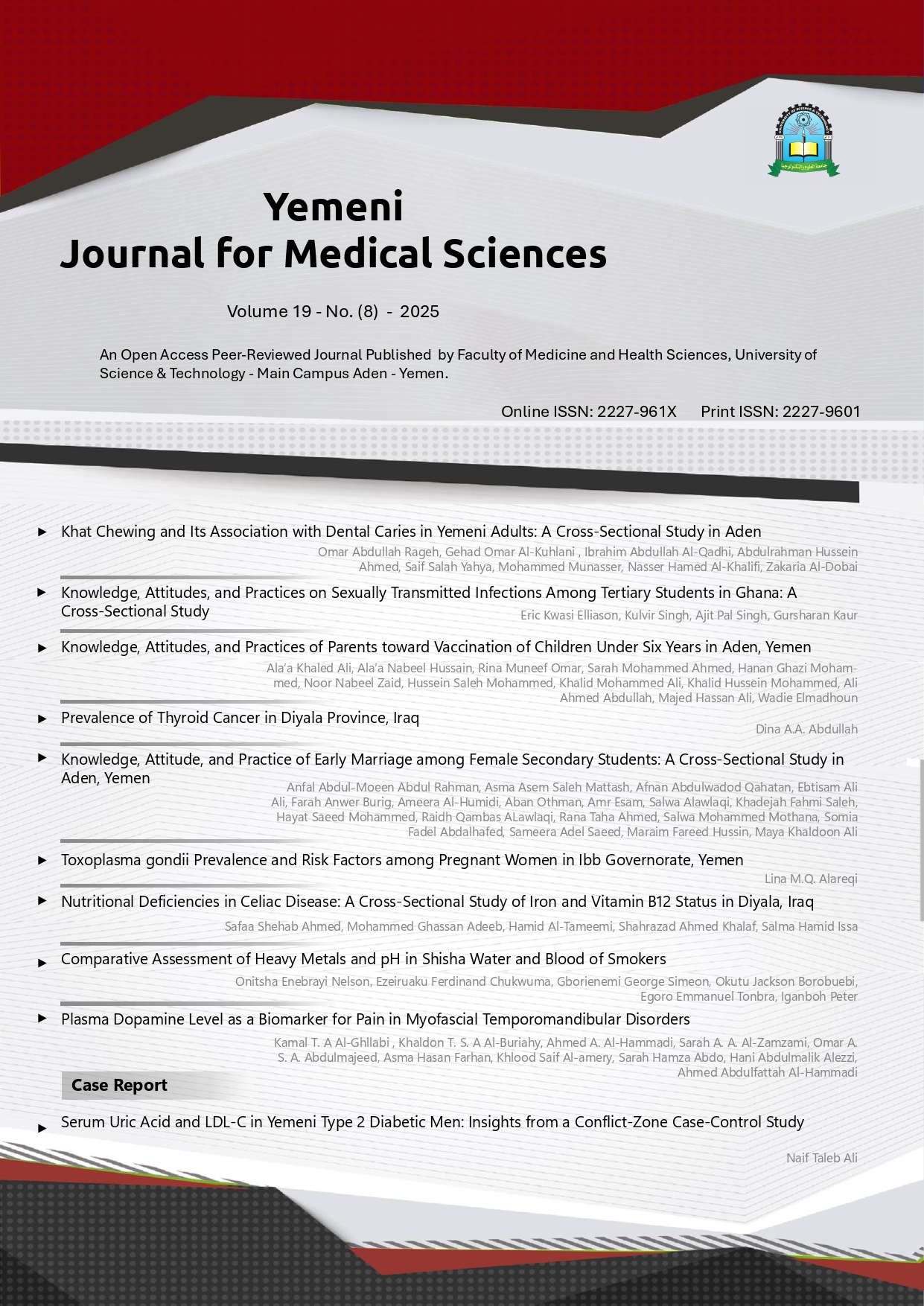Plasma Dopamine Level as a Biomarker for Pain in Myofascial Temporomandibular Disorders
##plugins.themes.bootstrap3.article.main##
Abstract
Background: Myofascial Temporomandibular Disorders (M-TMD) are characterized by chronic pain and dysfunction of the jaw muscles, often linked to stress and neurochemical imbalances. Dopamine, a neurotransmitter involved in pain modulation, has been proposed as a potential biomarker for M-TMD-related pain. This study aimed to evaluate plasma dopamine levels in M-TMD patients compared to healthy controls and explore its role as a pain biomarker.
Objective: The primary objective was to assess plasma dopamine levels in M-TMD patients and correlate them with clinical pain symptoms.
Methods: A case-control study was conducted with 50 participants (25 M-TMD patients and 25 age- and sex-matched healthy controls). Blood samples were collected in EDTA tubes, centrifuged at 2000 g for 10 minutes, and plasma was stored at −60°C. Dopamine levels were measured in nM. Clinical data, including age, gender, symptoms, and OPG findings, were recorded. Statistical analysis included mean comparisons (t-test) and subgroup analysis by gender and age.
Results: Plasma dopamine levels were significantly higher in M-TMD patients (mean: 5.01 nM) compared to controls (mean: 2.53 nM; p < 0.001). Female M-TMD patients had slightly higher dopamine levels (mean: 5.12 nM) than males (mean: 4.89 nM), though not statistically significant (p = 0.23). Common symptoms in M-TMD patients included bruxism (44%), morning jaw stiffness (40%), and stress-related jaw tension (56%). All patients exhibited mild condylar flattening on OPG, and no significant correlation was found between dopamine levels and age (r = 0.12, p = 0.34).
Conclusion: Elevated plasma dopamine levels in M-TMD patients suggest its potential role as a biomarker for pain and stress-related pathophysiology. The findings support further investigation into dopaminergic pathways in M-TMD and personalized treatment strategies targeting neurochemical imbalances.
##plugins.themes.bootstrap3.article.details##
Plasma dopamine, biomarker, myofascial temporomandibular disorders (M-TMD/TMD), chronic orofacial pain modulation, Neurochemical imbalance, DC/TMD (Diagnostic Criteria for TMD), HPLC-ECD, stress-related jaw dysfunction.

This work is licensed under a Creative Commons Attribution 4.0 International License.
YJMS publishes Open Access articles under the Creative Commons Attribution (CC BY) license. If author(s) submit their manuscript for consideration by YJMS, they agree to have the CC BY license applied to their work, which means that it may be reused in any form provided that the author(s) and the journal are properly cited. Under this license, author(s) also preserve the right of reusing the content of their manuscript provided that they cite the YJMS.








